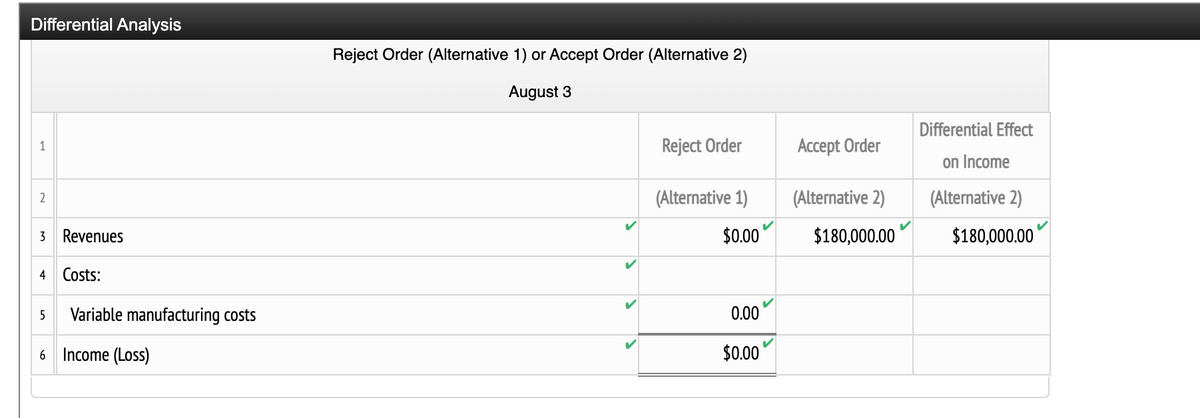Determine the amount of desired profit from the production and sale of flat panel displays. 2. Assuming that the product cost concept is used, determine (a) the cost amount per unit, (b) the markup percentage (rounded to two decimal places), and (c) the selling price of flat panel displays. 3. (Appendix) Assuming that the total cost concept is used, determine (a) the cost amount per unit, (b) the markup percentage (rounded to two decimal places), and (c) the selling price of flat panel displays. 4.
Determine the amount of desired profit from the production and sale of flat panel displays. 2. Assuming that the product cost concept is used, determine (a) the cost amount per unit, (b) the markup percentage (rounded to two decimal places), and (c) the selling price of flat panel displays. 3. (Appendix) Assuming that the total cost concept is used, determine (a) the cost amount per unit, (b) the markup percentage (rounded to two decimal places), and (c) the selling price of flat panel displays. 4.
Chapter5: Operating Activities: Purchases And Cash Payments
Section: Chapter Questions
Problem 1.6C
Related questions
Question
Crystal Displays Inc. recently began production of a new product, flat panel displays, which required the investment of $1,500,000 in assets. The costs of producing and selling 5,000 units of flat panel displays are estimated as follows:
|
1
|
Variable costs per unit:
|
|
|
2
|
Direct materials
|
$120.00
|
|
3
|
Direct labor
|
30.00
|
|
4
|
Factory overhead
|
50.00
|
|
5
|
Selling and administrative expenses
|
35.00
|
|
6
|
Total
|
$235.00
|
|
7
|
Fixed costs:
|
|
|
8
|
Factory overhead
|
$250,000.00
|
|
9
|
Selling and administrative expenses
|
150,000.00
|
Crystal Displays Inc. is currently considering establishing a selling price for flat panel displays. The president of Crystal Displays has decided to use the cost-plus approach to product pricing and has indicated that the displays must earn a 15% rate of return on invested assets.
| Required: | |||||
| 1. | Determine the amount of desired profit from the production and sale of flat panel displays. | ||||
| 2. | Assuming that the product cost concept is used, determine (a) the cost amount per unit, (b) the markup percentage (rounded to two decimal places), and (c) the selling price of flat panel displays. | ||||
| 3. | (Appendix) Assuming that the total cost concept is used, determine (a) the cost amount per unit, (b) the markup percentage (rounded to two decimal places), and (c) the selling price of flat panel displays. | ||||
| 4. | (Appendix) Assuming that the variable cost concept is used, determine (a) the cost amount per unit, (b) the markup percentage (rounded to two decimal places), and (c) the selling price of flat panel displays. | ||||
| 5. | Comment on any additional considerations that could influence establishing the selling price for flat panel displays. | ||||
| 6. | Assume that as of August 1, 3,000 units of flat panel displays have been produced and sold during the current year. Analysis of the domestic market indicates that 2,000 additional units are expected to be sold during the remainder of the year at the normal product price determined under the product cost concept. On August 3, Crystal Displays Inc. received an offer from Maple Leaf Visual Inc. for 800 units of flat panel displays at $225 each. Maple Leaf Visual Inc. will market the units in Canada under its own brand name, and no variable selling and administrative expenses associated with the sale will be incurred by Crystal Displays Inc. The additional business is not expected to affect the domestic sales of flat panel displays, and the additional units could be produced using existing factory, selling, and administrative capacity.
|
X
Differential Analysis
Shaded cells have feedback.
6. A. Prepare a differential analysis of the proposed sale to Maple Leaf Visual Inc. Refer to the lists of Labels and Amount Descriptions for the exact wording of the answer choices for text entries. For those boxes in which you must enter subtracted or negative numbers use a minus sign. If there is no amount or an amount is zero, enter “0”. A colon (:) will automatically appear if required.

Transcribed Image Text:Differential Analysis
Reject Order (Alternative 1) or Accept Order (Alternative 2)
August 3
Differential Effect
Reject Order
Accept Order
1
on Income
(Alternative 1)
(Alternative 2)
(Alternative 2)
2
Revenues
$0.00
$180,000.00
$180,000.00
3
4 Costs:
Variable manufacturing costs
0.00
5
6 Income (Loss)
$0.00
Expert Solution
This question has been solved!
Explore an expertly crafted, step-by-step solution for a thorough understanding of key concepts.
This is a popular solution!
Trending now
This is a popular solution!
Step by step
Solved in 5 steps with 7 images

Knowledge Booster
Learn more about
Need a deep-dive on the concept behind this application? Look no further. Learn more about this topic, accounting and related others by exploring similar questions and additional content below.Recommended textbooks for you


Financial & Managerial Accounting
Accounting
ISBN:
9781285866307
Author:
Carl Warren, James M. Reeve, Jonathan Duchac
Publisher:
Cengage Learning


Financial & Managerial Accounting
Accounting
ISBN:
9781285866307
Author:
Carl Warren, James M. Reeve, Jonathan Duchac
Publisher:
Cengage Learning